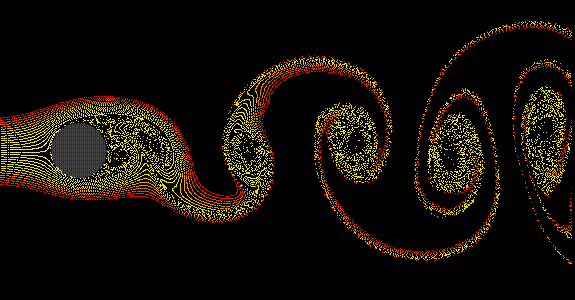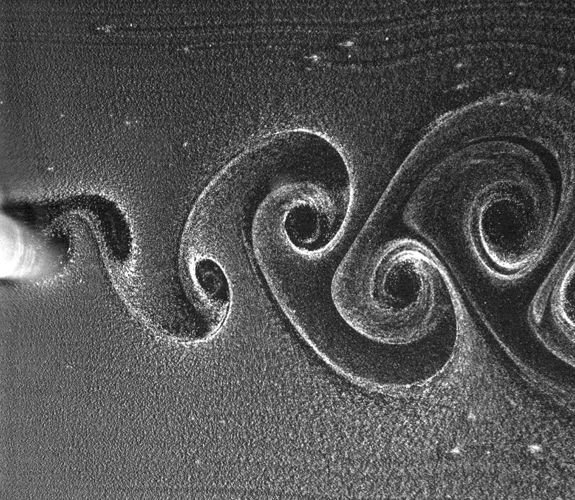
Ever wondered why a whirring sound is made when you twirl an object tied to a string, or why power lines can sing in the wind? The answer lies in a peculiar fluid phenomenon known as vortex shedding.
When air passes a non-streamlined object such as a cylinder, the air flows unstably past the surface. As a result, the layer of air that flows at the boundary detaches and swirls in a spiral. This swirling circle of air is known as a vortex. It looks just like a small scale tornado.

The vortices form in an alternating fashion at the top and bottom of the cylinder. The rate at which this happens is the vortex shedding frequency. If you twirl the object faster, or blow wind of a higher speed, this frequency increases. The rapid motion of air against the cylinder results in quicker detachment of the air layer, forming vortices more quickly.

Scientists can visualise this in a wind tunnel with small tracker particles injected within. You can see how the vortices detach and diffuse downstream, forming a beautiful trail. The Strouhal Number characterizes the frequency of oscillation. The Strouhal Number is roughly 0.2 and can be calculated based on the following formula:

whereby f is the frequency of the vortices, L is the diameter of the cylinder and U is the airflow velocity. Roughly speaking, the frequency of the sound produced is proportional to the wind speed and inversely proportional to object size.